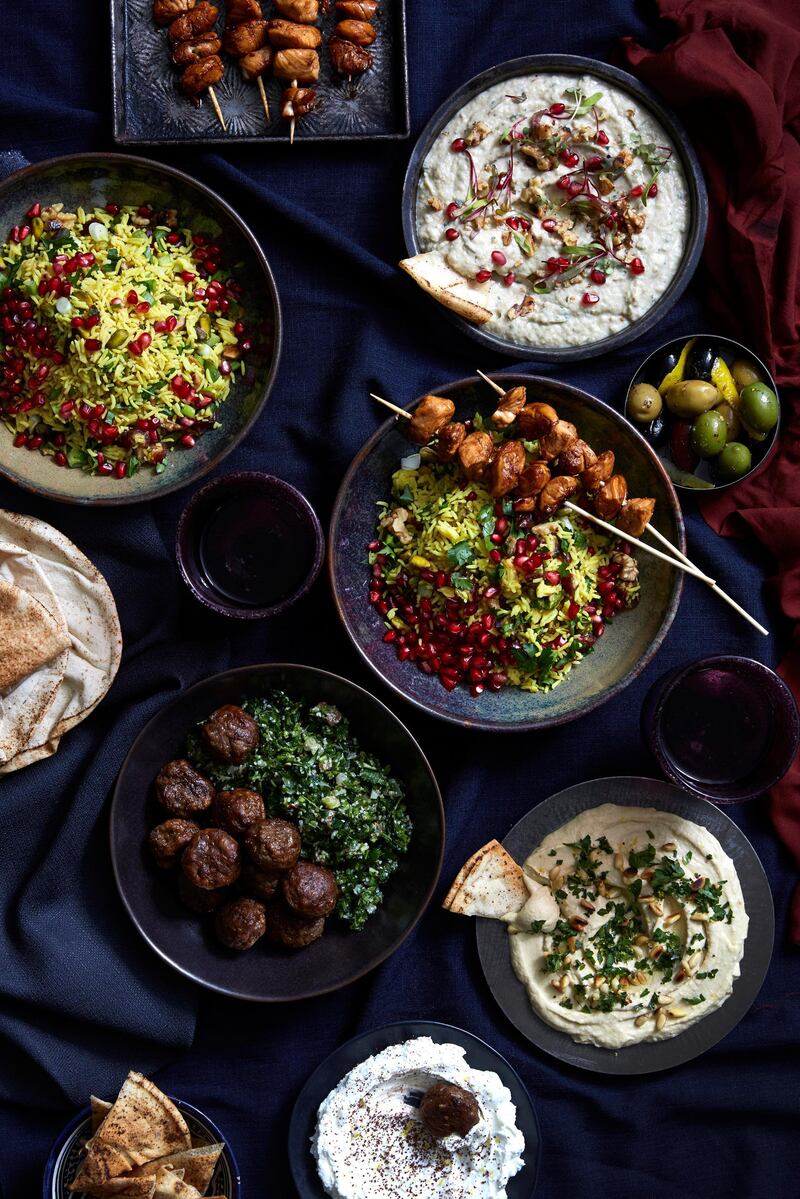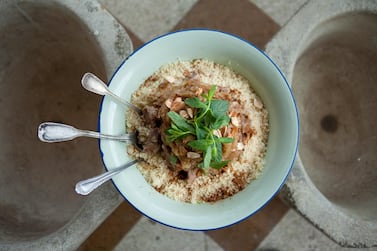The diverse nations that stretch from North Africa and Southern Europe to Turkey and the Levantine lands of the Middle East are all geographically linked by the Mediterranean Sea. But they are also inextricably united, regardless of different faiths and cultures, by a generous, shared cuisine that spans a kaleidoscope of distinctive and delicious recipes and drinks. It is a culture of food that joins people together and transcends national frontiers.
When Unesco recently inscribed couscous on its list of Intangible Cultural Heritage, one of its key reasons was that the candidature was proposed jointly by four diverse countries – Algeria, Tunisia, Morocco and Mauritania. They put away any selfish urges that might have tempted them to claim couscous solely for themselves.
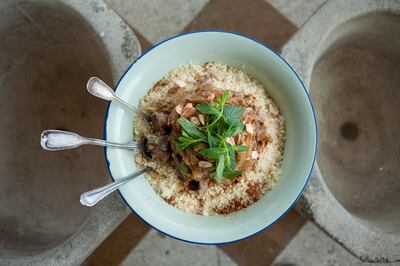
Now, food lovers across the Mediterranean are talking about a whole host of other classic dishes whose origins and heritage are far more complex and intertwined than initially meets the eye. Scalding aromatic mint tea is ceremoniously sipped from Marrakesh to Tripoli, while throughout the Arab and Ottoman worlds, a glass of tea is the universal symbol of hospitality.
The ubiquitous kebab is probably the only rival to America’s burger for the title of the world’s favourite fast food, but although most takeaways run by the Mediterranean diaspora proclaim to sell “Turkish kebabs”, these juicy grilled skewers of lamb and chicken can actually trace their heritage back to ancient Persia.
Humble hummus
And then there is hummus. From where did the idea come to transform humble chickpeas into the ultimate sharing dish? To discover the origin of hummus, you need to look where chickpeas were first cultivated, because no chickpeas, no hummus.
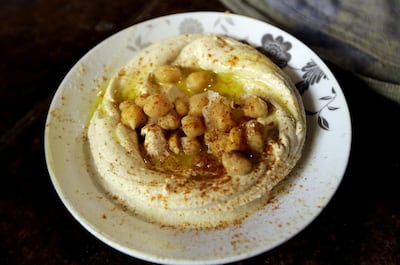
Few people in the West will know that the word hummus is actually Arabic for chickpeas, and it was in the Middle East and Turkey that this healthy high-protein legume first took root, although today, about 70 per cent of the world’s production is in India, where it is also a vital cooking ingredient, ground up as flour.
Today’s hummus still follows the age-old magical recipe that mixes mashed chickpeas, tahini sesame paste, lemon juice and garlic. Its first record in a cookbook dates back to 13th-century Egypt. Then the culinary complications begin, as the popularity of hummus spread rapidly across the Mediterranean; now it is a staple in restaurants from London to New York.
Israelis and Palestinians will both claim hummus for their own, while on the divided island of Cyprus, Turkish and Greek Cypriots can never agree on the origin of their favourite food. And then there are the Lebanese, where the one issue that can be assured to unite this fractured nation is the championing of hummus as their national dish.
Maybe everyone should watch the Australian documentary Make Hummus Not War, and then, when all the arguing is done, sit down and dip into an irresistible bowl of creamy hummus, flavoured with spices and herbs of choice – cumin, paprika and sumac, coriander or parsley – drizzled with olive oil, and surrounded by piping-hot pita bread, crunchy raw carrots, cucumber and red pepper.
If Unesco were still needed to act as referee after such a feast, then it has to be assumed they would simply declare hummus as a sharing dish claimed by all and owned by none.
Moroccan mint tea?
In the narrow alleyways of the souqs of Maghreb, shop owners will immediately offer a prospective customer a welcoming glass of mint tea before trying to sell any of their wares, in a ceremony that is played out every day from Tangiers to Tunis and Algiers. And in this part of North Africa, after a traditional meal of couscous or tagine, the obligatory plate of sticky sweetmeats is always accompanied by the waiter theatrically pouring mint tea from up high into ornate tiny glasses, never spilling a drop.

So you would imagine that this tradition of drinking Moroccan, or to give it's correct name, Maghrebi, mint tea goes back centuries. In reality, tea – Chinese gunpowder green tea – was first imported to North Africa by the British in the late 17th century, initially as a drink for the privileged classes, and only became universally adopted and adored as recently as the 19th century.
To dig deeper into the roots of mint tea, you have to realise that it is only one of the many varieties of Arab tea drunk across the Middle East. This brew is often served simply using black or green tea, but while the Moroccans add fresh mint leaves, other Arabic nations have their own preferred potions, using everything from cinnamon, dried limes, sage, cardamon and thyme. While hosts in this part of the world will always keep refilling your glass, take note of the Maghreb proverb: “The first glass is as gentle as life, the second as strong as love, the third as bitter as death.”
Claiming kebabs
The one dish that is omnipresent around the Mediterranean and Middle East is the kebab; simple, tasty fire-grilled or spit-roasted marinated meat that has now found a place in the hearts of hungry diners the world over.
Although there are multiple possible spellings of kebab, the sharing tradition of roasting skewers of meat over fire has been recorded for centuries in Mesopotamian, Persian and Arab cuisine. And this meaty tradition travelled to Mughal India’s tandoor ovens and South-East Asia’s satay grills long before the West finally discovered the wonders of shish and doner kebabs.
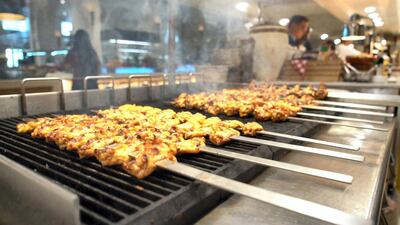
These foodie tidbits are just the tip of the iceberg of the shared cuisine that unites the countries surrounding the Mediterranean.
Next time you order a tiny cup of intensely strong Turkish coffee, remind yourself that actually the world’s preferred drink has its roots far away in Ethiopia, and in any case, the Greeks will adamantly insist that this stylised way of brewing and serving “Turkish” coffee was actually an Hellenic invention.
When it comes to the dishes served up as traditional mezze, it is safe to say that the distinctive parsley, tomato, onion and mint salad of tabbouleh almost certainly derives from the region that is now Lebanon and Syria, falafel can be claimed by the Egyptians and the smoked aubergines to create the distinct taste of baba ganoush is as much a part of Persian and Middle Eastern cuisine as Mediterranean.
All hail halloumi
While both the Greeks and Turks will again stake a claim to the delicious cheese, it is more likely that this distinctive blend of cow, sheep and goats milk was first transformed into a cheese on the Mediterranean island of Cyprus. Today, the popularity of fried or grilled halloumi has conquered not only the Middle East but also Europe and America.
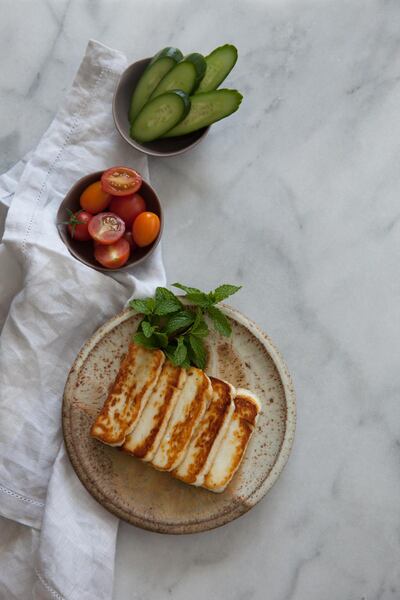
Pining for pita
And finally, what about that most important regional staple of all, pita bread? Though the anglicised term ‘pita’ comes from Greek, you need to look elsewhere for the wheat first used to make these ancient oven-baked flatbreads.
The earliest planting of once wild cereals was in the fertile plains of the Middle East. But pita has travelled far and wide since then, to become a global symbol of shared cuisine. And today it is impossible to imagine a hot pita missing from plates of mezze, juicy slices of shawarma, grilled skewers of souvlaki and kebab, garlicky tztaziki or creamy labneh.
